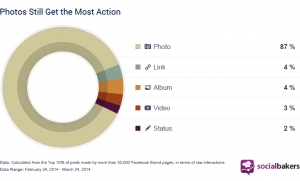Leverage data and AI strategies to drive customer retention through personalization and tailored marketing efforts.
In my last article, we looked at how to best use data during the purchase stage of the customer journey and how effective use of data can enhance outcomes for both the customer and the brand.
In this final article in the series, we’ll uncover how data can play an impactful role as we engage and retain existing customers, ideally turning them into lifetime loyal supporters of our brand and advocates to their friends, peers and colleagues.
Defining the retention stage

To start, let’s more clearly define what we mean by retention. This is the third stage of the customer journey, where we work to retain and engage our existing customers over time.
The retention stage aims to build strong relationships with our customers and provide them with ongoing value and support. This can involve offering loyalty programs, providing exceptional customer service and offering relevant product recommendations.
The data you need at this stage
Let’s look at the data that is most helpful at this stage in the customer journey and what these types of data enable marketers to do and measure.
Customer demographics and purchase history to understand our customers’ preferences and behaviors, as well as to:
- Understand customers’ preferences and behaviors to deliver targeted marketing campaigns.
- Identify patterns and trends in customer purchases to optimize product offerings and pricing strategies.
- Segment customers based on their demographics and purchase history to create personalized experiences.
Engagement data (email open rates, social media engagement, etc.) to measure the effectiveness of our retention marketing efforts, which allows us to:
- Identify which channels and messages resonate most with customers to optimize marketing strategies.
- Monitor customer engagement over time to detect changes in customer behavior and adjust marketing efforts accordingly.
Loyalty program data (redemptions, participation rates, etc.) to measure the effectiveness of our loyalty programs and identify opportunities for improvement, as well as to:
- Identify which loyalty program elements are most effective in motivating customer behavior to optimize program offerings.
- Monitor participation rates and redemption patterns to identify opportunities for improvement and optimize program offerings.
Customer satisfaction data (Net Promoter Score, customer satisfaction surveys, etc.) to understand how our customers perceive our brand and identify areas for improvement, as well as to:
- Measure changes in customer satisfaction over time to detect shifts in customer sentiment and adjust marketing efforts accordingly.
- Compare customer satisfaction scores across different demographics and segments to optimize marketing strategies.
Product usage data (frequency of use, duration of use, etc.) to understand how our customers are using our products and identify opportunities for cross-selling and upselling, as well as to:
- Measure changes in product usage patterns over time to detect shifts in customer behavior and adjust marketing efforts accordingly.
- Identify which products are most frequently used and which ones have the highest customer satisfaction to optimize product offerings and pricing strategies.
Having access to these data points allows marketers to understand their customers’ preferences and behaviors, measure the effectiveness of marketing efforts, identify opportunities for improvement and optimize product offerings and loyalty programs to increase customer satisfaction and retention.
Where AI fits in
As AI heavily relies on good data, there is a close relationship between artificial intelligence and the data we collect and utilize. Here are just a few of the ways that AI-based tools and approaches can benefit brands and their customers at this part of the journey:
- Personalized content and recommendations. AI can help personalize content and product recommendations for individual customers based on their preferences, purchase history and other factors. This can lead to increased customer engagement and loyalty.
- Predictive maintenance and support. AI-powered systems can help predict when customers may need support or maintenance, allowing for proactive outreach and improving overall customer satisfaction.
- Personalized marketing and communication: AI can help personalize marketing and communication efforts to individual customers based on their preferences, behaviors and other factors. This can lead to increased engagement and loyalty.
AI integration into these aspects of the retention phase of the customer journey can provide several benefits, including:
- Improved customer engagement and loyalty. AI-powered communication and personalized experiences can increase customer satisfaction and loyalty, leading to increased retention rates.
- Increased customer satisfaction and retention. AI can help organizations better understand their customers’ needs and preferences, enabling them to deliver tailored solutions that meet those needs, leading to increased customer satisfaction and retention.
- More efficient use of resources and budget. By automating routine tasks and providing data-driven insights, AI can help organizations optimize their resource allocation and budget utilization, reducing waste and increasing profitability.
Integrating AI into the retention phase of the customer journey can lead to improved customer engagement and loyalty, increased customer satisfaction and retention and more efficient use of resources and budget.
By leveraging AI-powered solutions, you can better understand customers’ needs, deliver personalized experiences and optimize resource allocation for long-term success.
Some other considerations
Your industry and unique business situation may dictate other considerations, but here are a few more things to keep in mind.
Measurement and reporting
We looked at some measurements already, but in addition to some of the more granular and channel-specific metrics, it is critical to look at the broader view of the customer relationship as well. Here are a few measurement and reporting considerations:
- Customer retention rate and churn rate metrics. These metrics can help businesses understand how many customers retain their services or products over time and where they may be dropping off.
- Customer lifetime value (CLV) and revenue reports. These reports can help businesses understand the total revenue potential of each customer over their lifetime and identify opportunities to increase CLV through loyalty programs or upselling.
- Customer satisfaction and NPS reports. These reports can help businesses understand how satisfied their customers are with the overall customer experience and identify opportunities for improvement.
What about data privacy?
We can’t forget data privacy, as building and maintaining strong customer relationships is based on trust. This includes our customers being confident that we are good data stewards.
There are many potential examples of channels and areas where customer data privacy can be a factor. Below are a few within the retention phase that are universal:
- Email marketing best practices. We may use email marketing campaigns to engage with our customers and promote loyalty. It is important to follow best practices such as providing clear opt-in and opt-out options, not sharing personal data with third parties and including unsubscribe links in all emails.
- Customer feedback and surveys. We may collect customer feedback through surveys or other methods. It is important to ensure that this data is collected securely and that customers know how their data will be used.
- Data storage and handling. As with the previous stages, storing and handling retention stage data securely and carefully is important to prevent unauthorized access or misuse.
The power of data across the customer journey
I hope you’ve enjoyed this three-part series on customer data across the journey. From our initial conversations and interactions with a customer to a lifetime loyal customer relationship, you can see the value of collecting and utilizing the right data at the right time while keeping privacy and customer preferences in mind all the way.
The post Driving growth through data: Optimizing the retention stage appeared first on MarTech.
(18)
Report Post






